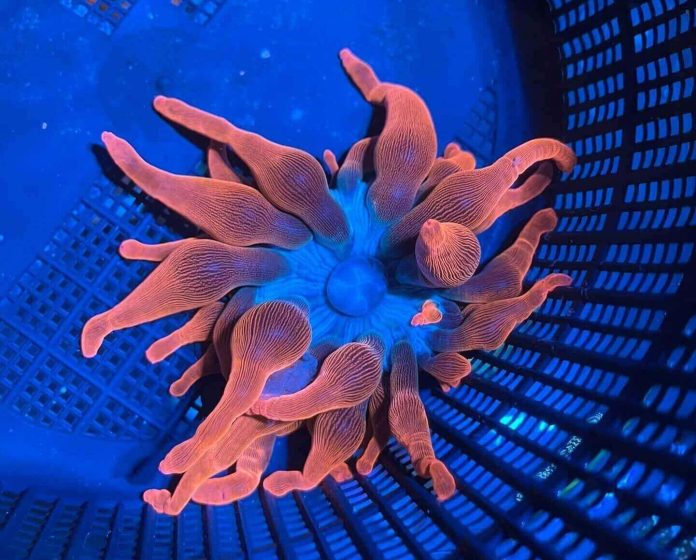Introduction
What is a black widow anemone? A black widow anemone, known by some people as the crown of thorns anemone, is one of the rare kind of semi-aggressive anemone with a dark central area that can range from deep blue to deep indigo with shiny red tentacles. The tentacles shift from greenish to dark as they grow beyond the oral disc, and the final portion of the tentacles has a striking bright red.
They usually have bright streaks of color on their tentacles as well as patterns that resemble webbing that is white near an oral disc which is what gives rise to its name. Black widow anemone is a fan of an environment with a moderate flow of water and thrives in mild waters.
- A Black Widow Anemone is part of the invertebrate family Anthozoa that is found in saltwater.
- The creatures are named after the flowers in the family of flowers known as the windflowers (the name originates directly from the Greek word “those,” which means flowers) and their tendency to move with the lightest ocean breeze.
- The majority of species are found in stony or hard coral reefs. Others are located on debris, rocks, or sand. And generally, wherever they are able to attach themselves.
- Anemones are famous for their symbiotic interactions that include clownfish inside them and benefiting from each other.
- The Black Widow Anemone, however, isn’t really that kind of anemone, but a different kind of anemone that’s worth talking about because of its uniqueness!
- Black Widow anemones can also be referred to by the names of Black Octopus or Black Maroon Anemones; however, the popular title Black Widow takes most of its fame.
- They are thought to be among the most poisonous anemones in the world because of their numerous poisons, which make them extremely hazardous for those who keep aquariums.
- While black widow anemones generally don’t harm humans, they must be handled with extreme attention and understanding of the way they communicate with one and each other.
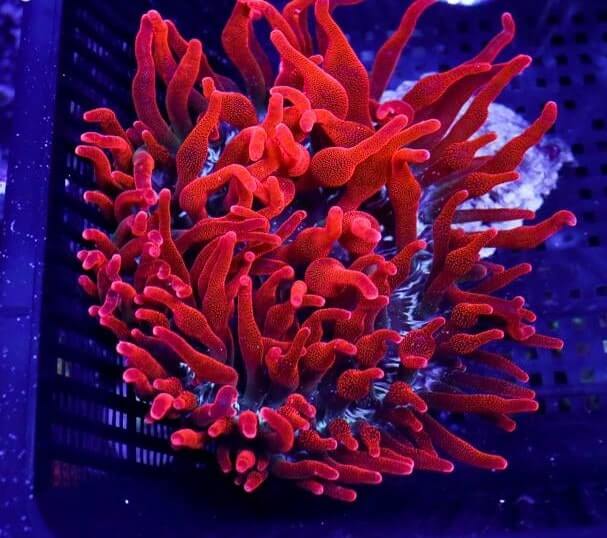
Appearance Of A Black Widow Anemone
What does a black widow anemone look like? Black Widow Anemones are available in various colors, including green, blue, and purple. Some rare ones may even come with white “leaves” connected to them!
How Big Do Black Widow Anemones Get?
Black Widows can be up to 15 inches in size, and their tentacles tend to be small and slim. They’re typically located in deeper waters but can be found in shallower areas because their habitat spans from the surface of the ocean to 50 meters depth.
Black Widow Anemone Breeding / Reproduction
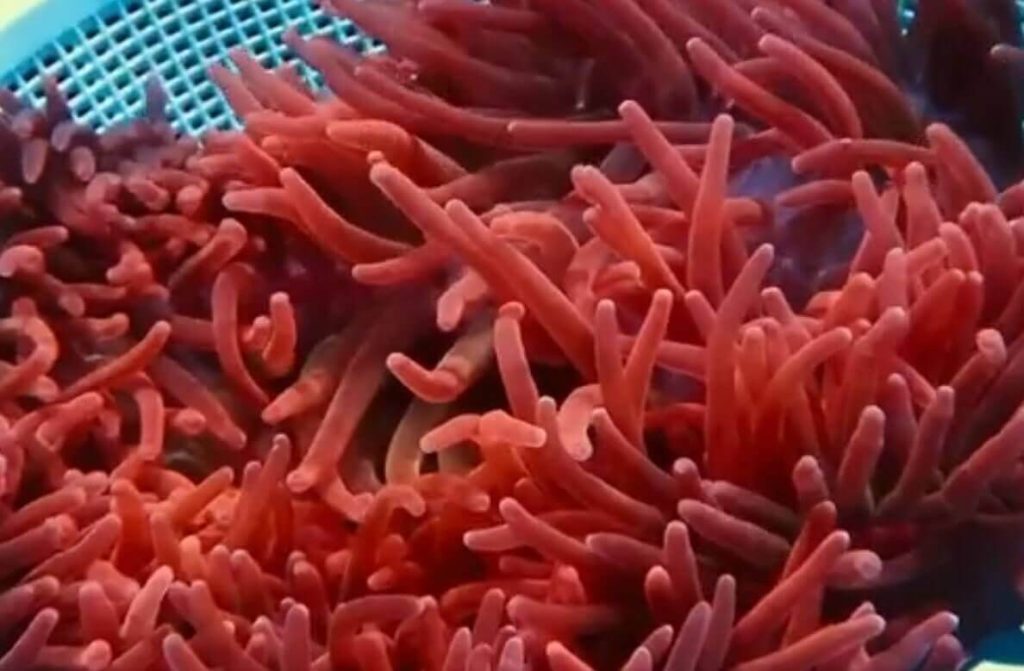
Black Widow Anemones come in both male and female sexes which makes them ideal for breeding reasons.
Anemones reproduce in wild black widows by splitting them in half, resulting in two black widows.
Black widow anemones can be reproduced asexually in aquariums by creating clones that will start new colonies of black widow anemones. This happens through a laceration process. The black widow anemone attaches to a piece of coral or rock and then begins replicating its black webbed pieces. These will eventually separate from the base and become free to move around, looking for a place to plant roots.
Black Widow Anemones have only been known to have one symbiotic relationship to Symbiodinium alga, their prey. However, they may have up to eight symbiotic relationships with other organisms.
Features Of Black A Black Widow Anemone
As you may have guessed, Black Widows can be extremely venomous. This means that humans must always use protective gear when handling them or maintaining their aquariums. The Black Widow Anemone’s tentacles contain nematocysts that inject venom into anyone who touches it. This can cause extreme pain, numbness, swelling, paralysis, or even death. The Black Widow’s venom can be extremely dangerous, and a lack of oxygen can cause death even if there are no symptoms. The Black Widow toxin stops blood from carrying it throughout the body, rendering its victim incapable of breathing. However, this doesn’t mean Black Widows will be sold for their venom. Divers collect Black Widows and then sell them for as high as a thousand dollars.
Black Widow anemones are very popular because of their unique appearance. They can also be challenging to care for, depending on how well they are taken care of. Although Black Widow Anemones do not have specific requirements, you will need to be well-versed in their behavior before you can own one without running into any issues.
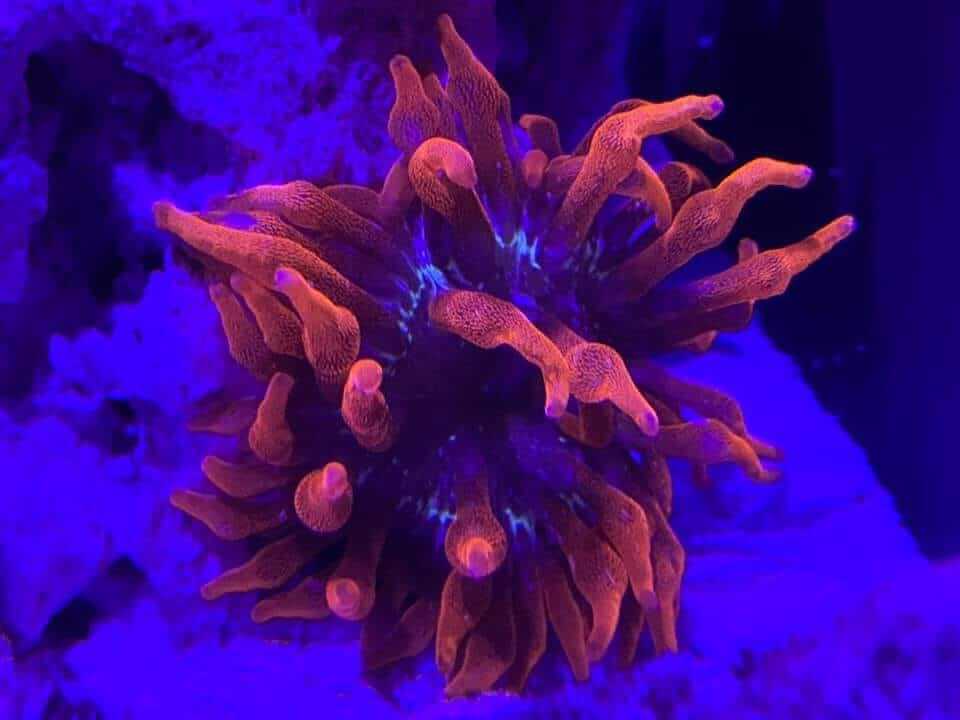
- They should be left alone as they can become aggressive if they are kept with any other Black Widows or any type of anemone.
- Black Widows need to be kept in tanks at least 3 feet in length and 60 gallons in volume. They are active animals that produce lots of oxygen, so they should be kept in tanks no smaller than 3 feet.
- Their substrate should be made of crushed coral. They must also have 8 hours of darkness.
- These anemones can quickly grow, so make sure to keep your Black Widow hydrated and to arrange the rocks in its tank regularly. This will ensure that it doesn’t become suffocated and continues to eat and breathe normally.
- It would be best if you also were careful not to accidentally drop tiny Black Widows (their offspring) down your drain. Black Widow anemones are capable of reproducing asexually.
- Black Widows need to be fed fish, shrimp, mussels, and clams every day.
- Black Widow venom may not kill you, but it can cause paralysis and pain. Children should be careful with Black Widows. Best to keep them away from children because they might accidently touch them.
Mostly, Black Widow anemones can be recommended for expert aquarists only because they require specific water chemistry and lots of attention to survive. Black widows aren’t one of the easy species to maintain, so we do not recommend you to go and purchase one unless you are well aware of how to take care of it and ready to be committed to the task. These anemones can be a unique element to any aquarium. They also look great and are an excellent addition for any aquarist.
Although they might not be the most temperamental, Black Widows can become great companions if they are well cared for. Black Widow anemones make great pets, but only buy one (plus any other marine creatures) if you’re experienced. They are complex animals to keep and are not recommended for beginners.
Black Widow Anemone Care Guide
The South Pacific Ocean is home to the black widow anemone. They are black with white spots and eight tentacles at the top. They are extremely poisonous and should be avoided all the time.
Black Widow Anemones will survive in aquariums with low salt (specific gravity 1.020-1.027), less than 8 degrees dH, and a pH of 8.1 to 8.4. Seventy-two degrees F (22 degrees C) is the ideal water temperature.
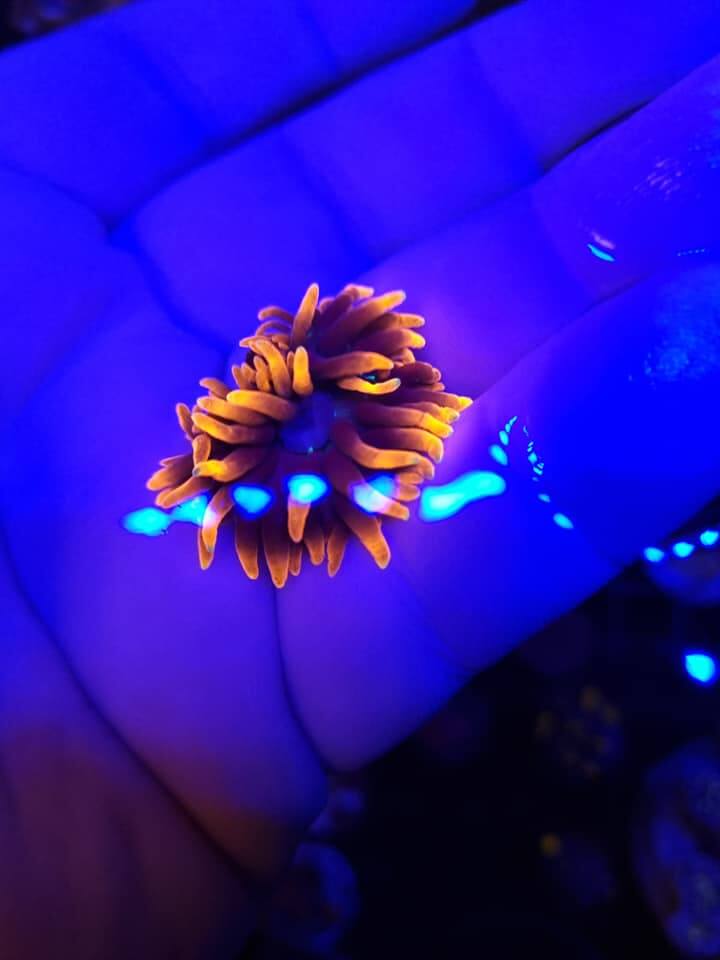
Black widow anemones in the wild can grow to a length of 1 inch to 2 feet (0.3-0.6 meters).
Aquariums should keep them at least 5 inches (12 cm) in depth to ensure adequate oxygen exchange for their symbiotic algae to survive.
They have a black web pattern that helps to keep symbiotic algae living in them. However, the algae will eventually die, and this can also lead to the death of the black widow anemone. So there must be adequate lighting.
Calcium supplementation is necessary to prevent their exoskeletons from deteriorating. You can do this by either putting a cuttlebone into the tank or calcium being ionized in the water through a calcium reactor. To promote healthy growth, they also require iodine. So make sure to do that.
Black widow anemones should not be handled without safety gear as they can produce severe pain and paralysis for several days if not treated by a doctor.
A black background should be used with bright white spots in order to care for black widow anemones properly. This is because black acts as camouflage against predators and other threats.
Its white spots, on the other hand, allow it to blend in with nearby corals from above but still appear black from below so that enemies can’t detect it. Black widow anemones should be accompanied by corals that don’t sting them in order to keep them healthy. They should be kept away from any other stinging creatures such as:
- Anthozoans (corallimorpharians, zoanthids, palythoa).
- Sea stars or other echinoderms.
- Nudibranchs.
- Other black widows.
Black Widow Anemones like to eat brine shrimp, so they should be fed at least once per day. Pre-packaged frozen plankton is a good alternative if you are unable to feed them twice a week. Black widow anemones wait at night to eat, with their tentacles extended towards any prey they see.
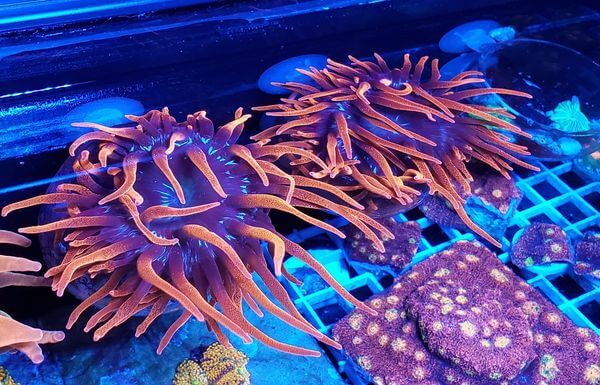
Pricing
A Black Widow Anemone can also be called a Bubble Tip. These are extremely rare and hard to find, which means that they can be very expensive. One Black Widow Anemone costs between $300 and $400.
Final Thoughts
Black widows are a fascinating and beautiful species of anemone that can be found near reefs or in shallow lagoons.
They have got a black base with bright red tentacles. This allows them to catch prey items for food.
When aquarium shopping, it is essential to make sure you buy a large tank that will allow your pet to grow. However, the tank should not be too big so it can become overwhelmed quickly.
You might want to think about whether there are other invertebrates that live within this range. They may be fighting for the territory once they have been introduced together.
These anemones require attention, but they are easy to care for in a home aquarium. With the tips above, you will not have any trouble taking on this responsibility.
